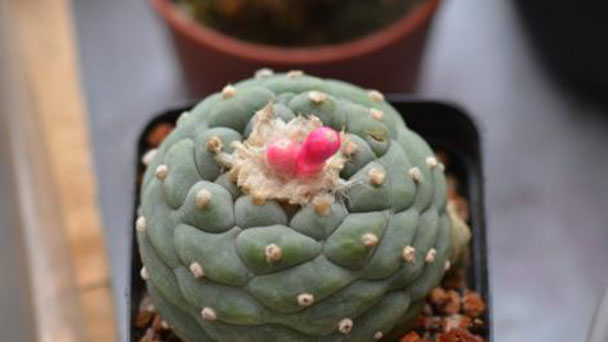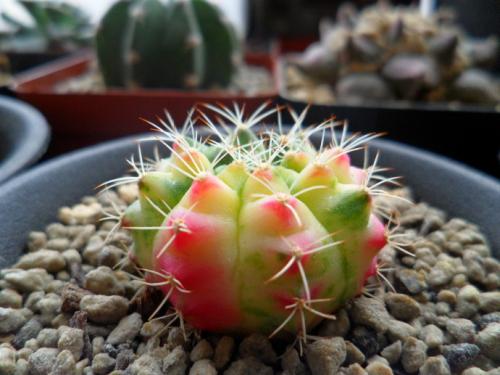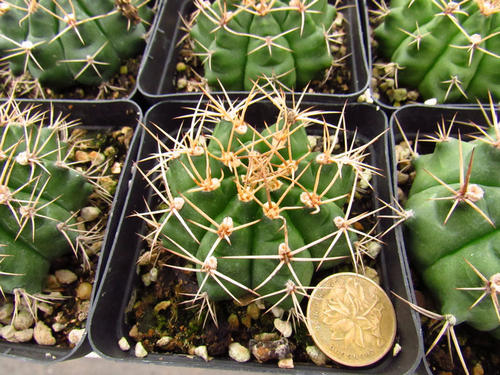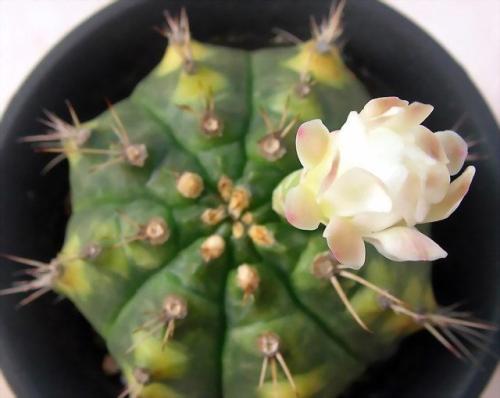Gymnocalycium anisitsii profile
Written by Maggie
Mar 22 2021

Gymnocalycium anisitsii is a member of the genus Gymocalycium in the Cactus family. Plants of Gymnocalycium anisitsii are single, after easy sprouting young ball, flat round ball to round ball, body color grayish green. Gymnocalycium anisitsii has white funnel-shaped flowers, pale rose-red. Bolivia. Gymnocalycium Anisitsii is small, cute and covered with thorns.
Gymnocalycium anisitsii is solitary, then easily sprouted, oblate to globose, grayish green. gymnocalycium anisitsii is produced in Bolivia.The ball diameter is 10 ~ 12cm. The body color is grey-green. Ribs are with 11 to 13 spinate verrucous processes.
Gymnocalycium anisitsii picture

Morphological characteristics of Gymnocalycium anisitsii
Gymnocalycium anisitsii is solitary, then easily sprouted, oblate to globose, grayish green. White funnel-shaped flowers, pale rose-red. Gymnocalycium anisitsii is produced in Bolivia. The ball diameter is 10 ~ 12cm. The body color is grey-green. Ribs are with 11 to 13 spinate verrucous processes.
Gymnocalycium anisitsii belongs to the genus Gymocalycium in the family Cacti. It is a solitary plant with easily sprouted bulbs, oblate to globular in diameter of 10 ~ 12cm, and grey-green in body color.Ribs with 11 to 13 spinate verrucous processes.
Gymnocalycium anisitsii contains 5 ~ 7 yellow and white fine needle-like thorns with lengths of 3 ~ 5cm. Top pink white funnel-shaped flowers in spring and summer, 3 -- 4cm in diameter.
Ecological habits of Gymnocalycium anisitsii
Gymnocalycium anisitsii likes high temperature and a dry environment. In winter, the room temperature should be kept above 20℃ in the daytime and not lower than 5℃ at night. Too low a temperature can easily cause root rot. Winter north temperature is low and should stop watering, and placed in a room higher than 5℃.
Gymnocalycium anisitsii requires full sunlight, but not strong sunlight in summer, proper shade is required.Indoor cultivation, can be irradiated by light, so that the healthy growth.
How to grow and care for Gymnocalycium anisitsii
The soil
Potted Gymnocalycium anisitsii requires drainage, permeability is good, out of the clay containing calcareous sand or silty loam, rotten leaves silty loam, 2 copies of coarse sand in 3, plus lime gravel or old building demolition waste Chen made from lime 1 wall crumbs mixture, also can use 2 copy each of the loam, coarse sand, rotten leaves the blocks, and l kind chip Chen made from mixing. Cultivation should be in the bottom of the basin pad with a small amount of broken bricks, tiles, in order to make the drainage unobstructed.
Planting
Gymnocalycium anisitsii is best planted in early spring, flower pots should not be too large, to accommodate the ball and a little gap is appropriate. The flowerpot is too large to be absorbed after pouring enough water. The air in the pot is not passable, and the root system is easy to rot. A few species of taproot and bird feather jade, giant elephant ball, etc., require a deeper cone basin.
Repotting
For potted plant Gymnocalycium anisitsii, it is advisable to use the earthenware pot with strong air permeability and the broken brick particles as the drainage layer. Palm root cluster is small, the pot should not be too large, the diameter of the pot should be similar to the plant diameter, beautiful and harmonious.
When repotting, part of the old roots should be cut off.Air 4 to 5 days later on the pot planting, planting should not be too deep, with the root neck of the ball and the soil surface level is appropriate. In order to avoid causing rotting roots, the newly planted cactus do not water, only 2-3 times a day spray, half a month after a small amount of watering, a month after the new roots grow to gradually increase watering.

Distribution of the Gymnocalycium anisitsii
Gymnocalycium Anisitsii is produced in Bolivia.
Function and use of Gymnocalycium anisitsii
Purify air
The stomata of Gymnocalycium anisitsii is closed in the daytime, which is used for gas exchange at night to release oxygen and absorb carbon dioxide, and stored in the daytime for photosynthesis. The thick leaves are conducive to the storage of more water and air, which can purify the air.
There are 5 ~ 7 yellow and white fine needle-like thorns, 3 ~ 5cm long. Pink-white funnel-shaped flowers, pale rose red, 3 -- 4cm in diameter in spring and summer. The stomata of Gymnocalycium anisitsii is closed in the daytime, which is used for gas exchange at night to release oxygen and absorb carbon dioxide, and stored in the daytime for photosynthesis. The thick leaves are conducive to the storage of more water and air, which can purify the air. Many people like to raise Gymnocalycium anisitsii at home.
Household environmental protection
Gymnocalycium anisitsii can be placed in the home to beautify the environment. Gymnocalycium anisitsii is small and lovely and does not occupy too much space, which is convenient for breeding. Growing Gymnocalycium anisitsii next to a computer also absorbs radiation, relaxing the eyes and protecting vision.

Latest Updated
- Benefits of Bugleweed - 7 Science-backed Health Benefits
- Bugleweed Dangers & Side Effects - Is It Poisonous?
- How to Plant Evergreen Trees - What You Should Know
- When to Plant Evergreens - Grow Guide for Evergreen Trees
- 12 Wonderful Evergreen Shrubs for Your Garden
- 12 Popular Evergreen Plants with Pictures for Beginners
- When And How To Prune A Lilac Bush Like a Pro
- How to Grow & Care for Lilac Vine (Hardenbergia Violacea)
- Japanese Lilac Tree (Syringa Reticulata) Care & Propagation Guide
- Shumard Oak Pros and Cons - What to Know
Popular Articles
- Winter maintenance of Antirrhinum Majus
- How to Grow Terminalia Mantaly Tree
- How to Grow and Care for Crossostephium Chinense
- How to grow Antirrhinum Majus in spring
- Peristeria Elata (Dove Orchid) Profile: Info & Care Guide
- Underwatered Snake Plant (Sansevieria Trifasciata) - Signs And How To Fix
- How to Care for Brazilian Jasmine Plant (Mandevilla Sanderi)
- How to Grow & Care for Graptopetalum Purple Delight in Summer
- Rosa Chinensis (China Rose): Plant Growing & Care Tips
- How to Care for Baby Sun Rose (Aptenia Cordifolia)